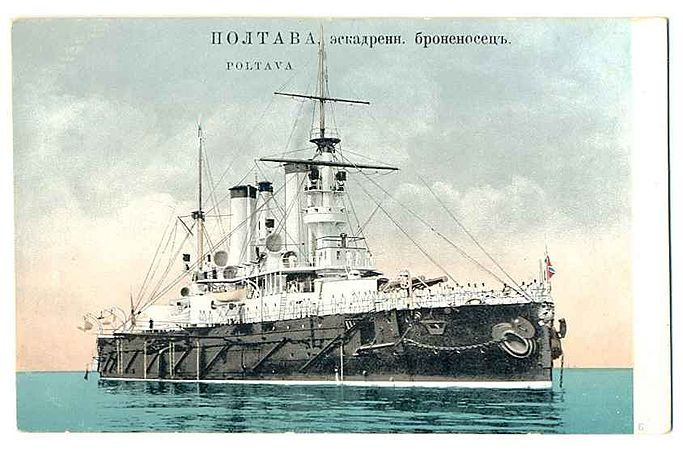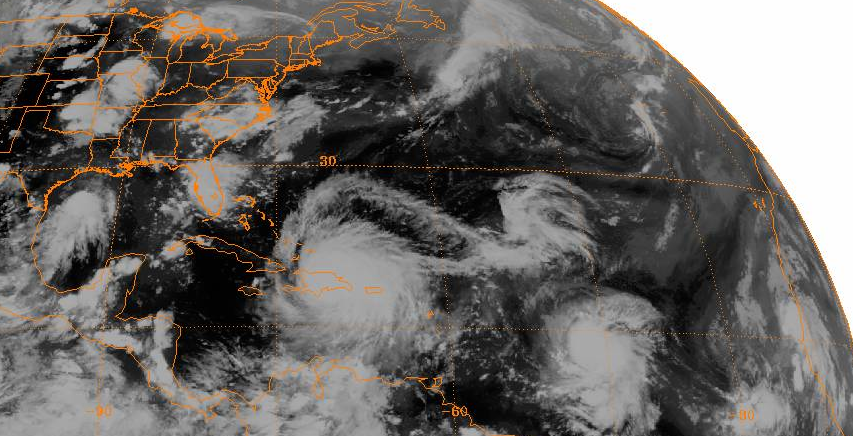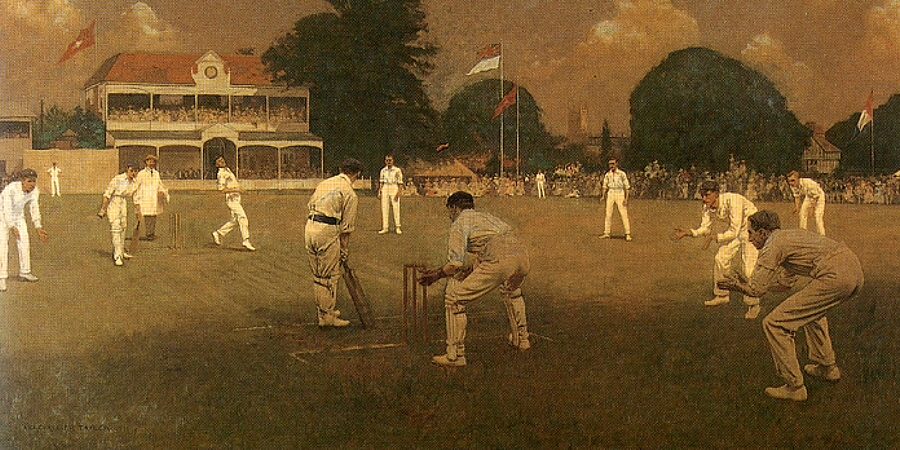Wikipedia:Wikipedia Signpost/Single/2014-07-09
Wikimania 2014—what will it cost?

Last May, James Forrester announced to the world that London had been awarded the 2014 Wikimania conference. Functioning as the Wikimedia movement's annual conference, it is separate from the chapter-focused Wikimedia Conference. The first Wikimania conference took place in 2005 in Frankfurt, with 380 attendees. London, the tenth, in August, is expected to attract 1500. With Wikimania ambition, attention, and attendance rising significantly over the last nine years, how have this year's monetary costs come to be?
Background
The London organizers had a head start on 2014 after a failed attempt for 2013, as they were able to reuse much of their previous bid's content and formatting. It also discouraged potential competitors from bidding. Still, the first plan put to the selection committee overseeing the bidding process was extremely large, featuring an £804,500 budget. Initial estimates in the proposal pegged the attendance at 8,000 (with 6,000 coming in a "public track", the manifestation of a "Wikifest" aimed at non-Wikimedians), when the largest Wikimania to date had been about 1400 in Washington, D.C. (2012).
Other estimates seemed to go even higher, to 10,000, though conference director Ed Saperia told the Signpost that "the 10,000 figure was actually 'delegate-days' rather than delegates. ~3000 delegate * 3 days = ~10,000 delegate days. And the venue can comfortably hold that many, though of course I can't guarantee how many tickets we'll sell." The exact planned total is murky, but in a March 2013 question and answer session with committee member James Hare, Saperia said that there would only be "4000-4500 people in the venue at any one point." However, these numbers were privately derided; we previously asked an individual familiar with the organizing team's preparations (but very critical of how they handled them) about these projected numbers. They told us that they had "seen absolutely no evidence that that figure is anything close to realistic" and commented that "the main auditorium [cannot hold] that many people, so there would be a thousand people milling around outside during Jimmy's address".
Revenue was pegged at £860,000, with £500,000 from corporate sponsorships, £300,000 from the Wikifest ("6000 [2000 daily passes per day] at £50 each"; more on what happened to the Wikifest is below), and £60,000 from the registration fees for Wikimedia movement attendees.
The selection committee forced the London team to sharply reduce their budget. Serious consideration was given to re-opening the bidding process to different cities who could provide a less "costly and complicated [conference with a] simpler core budget and lower-cost options for attendees." Hare wrote to the Signpost that "their original proposal was sweeping in scope, calling for a huge outreach component attracting 10,000 people over the duration of the conference. We had doubts about the feasibility of such a proposal, so we asked them to produce a more realistic budget in the event they did not hit their revenue targets."
The London organizers responded by offering three separate budgets: "core", "basic", and "luxury". They were awarded the conference on the basis of the first, with projected revenues of £214,000: £99,000 from the WMF, £85,000 from sponsorships, and £30,000 from 1500 registrations. Costs would be £211,882, including a projected £40,000 for the Barbican Centre.
Since then, the Wikimania team has faced several recent troubles, including being two months late in deciding what programs to include, registration payments being accepted only via credit cards, and problems with the official hotel. Ellie Young, the WMF's conference coordinator working with the organizers, responded to these issues: according to her, being late is "not uncommon for large events like these, and it doesn't appear to have deterred people from registering", and PayPal is now being accepted for the registration costs.
Budget questions

Furthermore, the plans and costs of the conference have changed greatly from the "core" budget and certainly from the grand initial proposal. The Wikifest, which was a separate conference in the same venue geared towards non-Wikimedians and initially intended to be on the same scale as Wikimania, has been whittled down to a series of keynote speakers. Stevie Benton of Wikimedia UK (WMUK) wrote to us in May that the two are "one and the same", and that the "themes" in this Wikimania "are also focused on outreach beyond the existing Wikimedian community", though without clarifying where the focus would manifest itself, as at the time of his comments, the conference's programme had not been released. In a similar vein, Saperia stated that "we are still having a two-in-one conference, but of course it won't be billed as that; to do so would undermine the whole point of trying to do a more inclusive, outreach focused event."
Young and Garfield Byrd, the Chief of Finance and Administration at the WMF, told the Signpost that the total budget for Wikimania 2014 is around $500,000. This includes the cost of the Barbican Centre, which jumped from £40,000 ($61,000) in the initial proposal to £120,000 ($205,000), though it started even lower; when asked about it in the March 2013 Q&A with Hare, Saperia replied:
| “ | The venue is owned by the City of London corporation who are backing this bid. The venue has a tentative reservation on it until June 1st and has provisionally been given to us at cost, we are currently in the process of drawing up an MOU which we hope will be done in time for the bid decision. This is a high level agreement, including dates, estimated costs and includes things such as the Lord Mayor (Head of the City of London) opening the conference. Once this is complete we will be at the point in negotiation where we are debating over who will pay for things like security, on site medical, disposable items (trash bags, toilet roll etc), this is surprisingly time consuming and requires legal input from both sides, as such there is a reluctance to move any further until we get confirmation one way or another if we have won the bid. So in answer to your question we could have it signed off within a month of getting the go ahead. | ” |
By "at cost", Saperia was planning for a total venue expenditure of £20,000/$34,000, though one person with knowledge about the preparations wrote us that it was "absurd" to think that could ever happen. While it's not clear what caused the price to increase, Saperia told us that the center is now "being generous in return so we're getting more staff and space than we expected, allowing us to make savings elsewhere." In essence, it is a matter of necessity: they are locked into spending 40% of the budget on the Barbican, so they are attempting to host as many events as possible there to slash costs elsewhere. An example of this could come from what was going to be the closing party at Tate Modern, an event highlighted and emphasized in a presentation given at Wikimania 2013, but canceled due to what Saperia said were "complications" in using the building.
Future Wikimanias may turn out to be less expensive: according to Wikimania 2015 organizer and president of Wikimedia Mexico Ivan Martínez, the WMF directed them to have a budget that was as close to $300,000 as possible.
| “ | Everything is on track and it's going to be a great event. ... We're looking forward to seeing the community there. | ” |
What about revenue? According to Young and Byrd, the London Wikimania will receive an outlay of around $300,000 from the Wikimedia Foundation. This is $200,000 higher than Wikimania 2011 in Haifa, Israel, though that conference had only 650 attendees. However, it compares very favorably to Wikimania 2012, which cost $554,422.51 and was held in Washington, D.C., another expensive city.
An additional $200,000 is being raised from the five corporate sponsors: Google, Ask.com, Wikihow, MathWorks, and Tupperware. While the bid listed 22 possible companies and organizations, and only one of them (Google) signed on, Young chided us for focusing on the dichotomy: "it is a very difficult conference to promote to corporate sponsors." For its part, Wikimedia UK will be spending £38,500 from its reserves for "printed materials, merchandising, and to pay for three temporary members of staff to help with the conference", according to Benton.
The bottom line, however, is whether the conference will be ready for its debut in a month. Praising the organizing team and WMUK, Young assured us that it will be:
| “ | My job as conference coordinator is to make sure everything is executed, and all the required tasks are being handled. We're doing this in London, and we'll do it next year in Mexico. We are on target. ... Everything is on track and it's going to be a great event. The volunteer program committee and our Wikimania team and the staff has been active, engaged, and instrumental in making sure we will have an exceptional event next month. We're looking forward to seeing the community there. | ” |
Still waiting on Wikimania 2013's budget
In a recurring postscript, the financial report from Wikimania 2013—due last August, or eleven months ago—has still not been released. Byrd advised us in April that the WMF had received the required documents from Hong Kong, and they are now waiting for the final audit cost before publishing them.
Something hampering the London organizers, and possibly those of the 2015 Mexico City event, is that previous budgets still remain opaque to the public, with limited information on expenditures and income (if both are even listed). James Hare wrote us that "It does frustrate me that Wikimania has not been standardized enough ... but I think it's going to gradually get better and you can never be too perfect at predicting the cost of something like a conference, given the economic inefficiencies of event planning at this scale." Such missing materials can create a "systemic incompetence stemming from a lack of rigorous documentation for most of the conference's existence".
- This article was edited after publication to clarify the introduction and add the expense total for Wikimania 2012.
Reader comments
Wikicup's third round sees money, space, battleships and more

After an extremely close race, round three is over. 244 points secured a place in Round 4, which is comparable to previous years—321 was required in 2013, and 243 points in 2012. Pool C's ![]() Godot13 (submissions) was the round's highest scorer, mostly due to 32 featured pictures, including both scans and photographs. Also from Pool C,
Godot13 (submissions) was the round's highest scorer, mostly due to 32 featured pictures, including both scans and photographs. Also from Pool C, ![]() Casliber (submissions) finished second overall, claiming three featured articles, including the high-importance Grus (constellation). Third place was Pool B's
Casliber (submissions) finished second overall, claiming three featured articles, including the high-importance Grus (constellation). Third place was Pool B's ![]() Sturmvogel 66 (submissions), whose contributions included featured articles on the Russian battleships Poltava and Peresvet. Pool C saw the highest number of participants advance, with six of eight making it to the next round.
Sturmvogel 66 (submissions), whose contributions included featured articles on the Russian battleships Poltava and Peresvet. Pool C saw the highest number of participants advance, with six of eight making it to the next round.
This year's first featured portal came in this round, with ![]() Sven Manguard (submissions) taking Portal:Literature to featured status. The round also saw the first good topic points, thanks to
Sven Manguard (submissions) taking Portal:Literature to featured status. The round also saw the first good topic points, thanks to ![]() 12george1 (submissions) and the 2013 Atlantic hurricane season. This means that all content types have been claimed this year. Other contributions of note this round include a featured topic on Maya Angelou's autobiographies from
12george1 (submissions) and the 2013 Atlantic hurricane season. This means that all content types have been claimed this year. Other contributions of note this round include a featured topic on Maya Angelou's autobiographies from ![]() Figureskatingfan (submissions), a good article on the noted Czech footballer Tomáš Rosický from
Figureskatingfan (submissions), a good article on the noted Czech footballer Tomáš Rosický from ![]() Cloudz679 (submissions) and a now-featured video game screenshot, freely released due to the efforts of
Cloudz679 (submissions) and a now-featured video game screenshot, freely released due to the efforts of ![]() Sven Manguard (submissions).
Sven Manguard (submissions).
Sixteen semi-finalists
This is, of course, only a bite-sized sample of each person's work, and in no case represents the whole contribution of the participants.
-
Besides his work with money from the Smithsonian Institution archives, first-place Godot13 also showed off his photographic skill, such as this featured picture.
-
Banksia coccinea, promoted this round, is only one of twenty-three featured articles on Banksia species created by second-place Casliber
-
Third-place Sturmvogel 66 brought the Russian battleship Poltava to featured article status: only one of many naval articles he's worked on.
-
Fourth-place Adam Cuerden restored some valuable photos, such as this one of John Lorimer Worden.
-
Fifth-place ThaddeusB created a good article on The Boat Race 2014, an annual competition between Oxford and Cambridge Universities.
-
Cwmhiraeth worked primarily on creating and expanding articles on different organisms, such as Echidna catenata, the chain moray eel.
-
12george1 worked with hurricanes, including bringing the rather scary 1979 Atlantic hurricane season to good article: There were two hurricanes, a tropical storm, and two tropical depressions active all at the same time.
-
The C of E both created and brought the article on the iconic cricket painting, Kent vs Lancashire at Canterbury, to good article status this round.
-
Matty.007 brought an article on the World War II British minesweeper, HMS Algerine (J213), to good article status.
-
WikiRedactor brought Marina Diamandis's album Electra Heart through good article status, and all the way to featured article.
-
Yellow Evan worked on destructive typhoons from the 1980s, such as Typhoon Nelson (1985).
-
Cloudz679 brought two articles on Czech footballers (Tomáš Rosický shown) to good article status.
-
While it's a bit hard to explain List of Major League Baseball hitters who have batted in 10 runs in one game in a short caption, Bloom6132 did excellent work on it. (pictured: Wilbert Robinson, the first person to achieve it)
-
User:Prism created many good articles on albums and songs, such as "Runaway Daydreamer" by Sophie Ellis-Bextor (pictured).
Runners-up
And, of course, just because they didn't pass to the current round doesn't mean they didn't make valued contributions to Wikipedia. Here's some of the work done by those who didn't pass.
-
Sven Manguard created a featured portal on literature, the first portal in the competition this year. (Don Quixote shown.)
-
Rodw always has beautifully-illustrated articles, as his photo for his good article Sutton Court shows.
-
Red Phoenix brought the article on the Sega CD to featured article, and the WonderSwan to good article.
-
Ruby2010 has a lovely good article on Elizabeth Campbell, Duchess of Argyll.
-
John Baker White served in the War of 1812, and remains the longest-serving Clerk of Court in Hampshire County, Virginia. Caponer raised his article to good article status.
Reader comments
Exploring the United States and Canada with LiAnna Davis
Introduction
The Wikimedia Education Program currently spans 60 programs around the world. Students and instructors participate at almost every level of education. Subjects covered include law, medicine, arts, literature, information science, biology, history, psychology, and many others. The Wikimedia in Education Signpost series presents a snapshot of the Wikimedia Global Education Program as it exists in 2014. We interviewed participants and facilitators from the United States and Canada, Serbia, Israel, the Arab World, and Mexico, in addition to the Wikimedia Foundation.

Interview
- This interview is with LiAnna Davis, the head of communications for the Wiki Education Foundation.
Can you describe how the Education Program started in the United States?


- In 2009, the Wikimedia Foundation had started to see a trend of university faculty members assigning their students to edit Wikipedia as part of their coursework. We invited several of these faculty members and asked them for their advice and feedback about starting a more formal program to support student editing. The response was overwhelmingly positive, with the caveat that doing Wikipedia assignments takes much more effort than traditional assignments. So we set out to do a small pilot in fall 2010 to see if a more formal program would work, with Wikipedia Ambassadors available to support the instructors participating. The pilot, called the Public Policy Initiative, was a great success, with student editors improving the quality of Wikipedia articles. We began expanding the program from that term until 2012, when we started the efforts to spin off the United States and Canada programs into their own nonprofit organization. In 2013, the Wiki Education Foundation was born as that organization, an independent spin-off of the Wikimedia Foundation.
How many instructors and students currently participate in the program?
- During the spring 2014 term, 61 instructors and 1,852 student editors participated in the program.
Which areas of the country currently participate?

- We're spread geographically throughout the U.S. and Canada. See this pdf for a map.
What grade levels are the students who participate?
- First year of undergraduate through last year of Ph.D.
As you probably know, Wikipedia editors are predominantly male in most languages. Approximately what percentage of the students who participate in the United States education program are female?
- Student surveys suggest that our student editors are about 61% female.
How are instructors and students trained to use Wikipedia?
- We encourage all instructors to go through the WP:EDUCATOR orientation, and student editors to go through the WP:STUDENT training. Additionally, we have Wikipedia Ambassadors who are available to support both instructors and student editors. Like most editors, instructors and students ultimately learn by doing, but we've been continually refining these trainings to help them avoid the most common types of newcomer mistakes.
Do students and instructors usually use VisualEditor?
- Some do, but most don't. We explain the options and let them choose. Until recently, the citation features of VisualEditor haven't been mature enough to work well for the kind of work most student editors do, so most of the training and help material has continued to focus on wikitext editing. For the upcoming term, though, we're interested to see if VisualEditor is good enough to make it the recommended way of getting started.
What kinds of assignments do students receive when using Wikipedia in the classroom? For example, are they translating, editing existing articles, or creating new articles? Which languages do they use?

- Most student editors expand weak articles, but some create new articles. Most of the work happens on English Wikipedia, but we have a handful of student editors who work on their native language Wikipedias instead.
- The most common type of assignment works as a replacement for a typical term paper: student editors begin by exploring Wikipedia's coverage of a topic related to the course, then they start identifying and studying the relevant sources, and then they synthesize that into new Wikipedia content (whether expanding an existing article or starting a new one). But there are a lot of other assignment models as well, from making illustrations, photos or videos to illustrate articles, to short copyediting assignments, to group assignments where several student editors or an entire class try to improve a single article as much as they can.
Has the program received any endorsements from government agencies?

- No, but we do work with initiatives from the Association for Psychological Sciences, the American Sociological Association, and the National Communication Association.
How do you expect the program to develop in the next few years?
- We want to explore the partnerships with academic associations in the future; we see these as keys to scalability and sustainability. Other keys include institutionalizing our program at university campuses. By this, we mean working with existing university structures that provide teaching resource support for faculty members, such as teaching and learning centers. When we train staff members of teaching and learning centers, they do the outreach work to faculty members, and include Wikipedia as a tool in their arsenal, along with blogs and other tools.
- In the fall, we'll begin to explore a pilot to extend Wikipedia to academic honor societies as a way to target high-achieving students in under-represented disciplines on Wikipedia. In coming years, we'd also like to explore more connections with university libraries and archives to connect our program better with GLAM work.
Do you have any statistics or charts showing the growth of articles contributed, number of students, number of professors, number of ambassadors, use of the Education extension, or number of universities for US/CAN?

- One of the benefits of being our own organization is we can set our goals up a bit differently; we want to emphasize quality rather than quantity, so we haven't kept as much up-to-date information on numbers. But that being said, this page has the numbers we've tracked since the beginning.
Is there a way to work backwards from an account through the Education program extension to determine if an account has been associated with a registered class?
- While the term is current (and thus the student is likely active as a student editor for a particular course), the extension places a note on the top of a student's contributions page. Here's an example of what that looks like, from one of our summer classes going on now.
- Once the term is over, that message will disappear. That data is retained in the user logs when the user enrolls in a course, so if you really want to dig, you can find it. But in your example, the edits are happening to articles on your watchlist, so presumably they're happening while the course is active, so you should be able to see it on the student editor's contribs page.
- Here's an example of a student editor who was enrolled in a course that's now over; that banner is not on their contribs page, but it is recorded on their log.
For awhile I was hearing that plagiarism and copyright violations were significant problems among the population of student editors. Has there been any research done to quantify the number of reversions and/or the number of copyright complaints for student editors, hopefully showing a decrease in plagiarism, copyright violations, and reversions over time?
- Wiki Ed's Sage Ross did a study on plagiarism on the English Wikipedia, comparing our students' work to other new users and top editors.
- To get relevant sample sizes for articles in which the majority of content was added by student editors, we had to combine multiple terms into one cohort, so we don't have data tracked over time. That being said, we are really proud that we had zero incidents about Wiki Education Foundation classes on the Education Noticeboard the spring 2014 term, which I think speaks highly about the work Jami, Sage, and our volunteers have done in preparing students to edit effectively.
Has there been any research showing how the retention rates of student editors after their Wikipedia assignments has changed over time?

- We see about a 2% retention of student editors—that hasn't changed much over time. But note that our focus is not and has never been retaining student editors; we'd much rather retain instructors. We invest a lot of time into teaching each instructor how to work with Wikipedia as a teaching tool, but once that instructor knows how to do it, it takes very little time on our end, and the instructor brings a new class of high-quality student contributions to Wikipedia each term. So we track instructor retention instead; here's a slide from Jami's recent WikiConference USA presentation about our instructor retention.
- Is there anything else that you would like Signpost readers to know about the program?
- I think one of the best ways to get a feel for how our program helps Wikipedia is to look through some student editors' work. Here are some examples:
- New article that achieved DYK from a Louisiana State University class: Martian lava tube
- New article from a University of Toronto class: Gamification of learning
- Expanded article that reached GA from a Rice University class: HIV/AIDS in Malawi
- A video from an Alverno College class: Figure skating
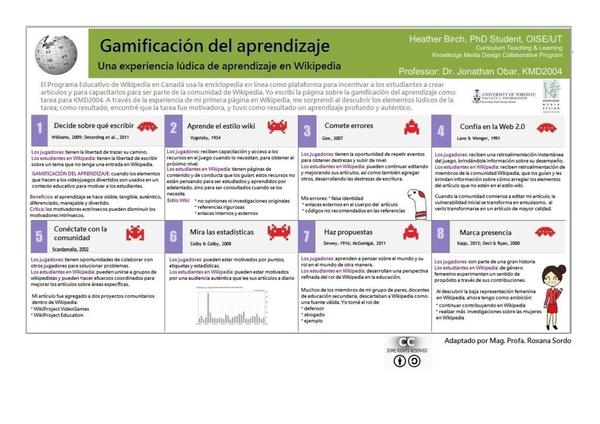
Reader comments
Three cheers for featured pictures!

Featured articles
Five featured articles were promoted this week.


- Roy Phillipps (nominated by Ian Rose) was an Australian fighter ace of World War I. He achieved fifteen victories in aerial combat, four of them in a single action over France on 12 June 1918. A grazier between the wars, Phillipps joined the Royal Australian Air Force in 1940 and was killed in a plane crash the following year. This is the second article on an Australian World War I ace that Ian has taken to Featured status this year.
- Head VI (nominated by Ceoil) is an oil-on-canvas painting by the Irish-born British figurative artist Francis Bacon, the last of six panels making up his "1949 Head" series. It shows a bust view of a single figure, modelled on Diego Velázquez's Portrait of Innocent X. It was the first of Bacon's paintings to reference the Velázquez, a portrait that was to haunt him throughout his career, and was the beginning of his sequence of "screaming popes". In his nomination statement, Ceoil confessed "this painting has fascinated and unnerved me for 25 years".
- Cuban macaw (nominated by FunkMonk), also known as the Cuban red macaw (Ara tricolor), was a species of macaw native to the main island of Cuba and the nearby Isla de la Juventud that went extinct in the late 19th century. It may have been closely related to the scarlet macaw and the Jamaican red macaw. No modern skeletons are known, but a few subfossil remains have been found. This is the second of FunkMonk's articles on extinct birds to reach Featured status this year.
- Anachronox (nominated by GamerPro64 and ZeaLitY) is a third-person role-playing video game produced by Tom Hall and the Dallas Ion Storm games studio, released in 2001. It centers on Sylvester "Sly Boots" Bucelli, a down-and-out private investigator who looks for work in the slums of Anachronox, a once-abandoned planet near the galaxy's jumpgate hub. He travels to other planets, amasses an unlikely group of friends, and unravels a mystery that threatens the fate of the universe. This is GamerPro64's first Featured Article.
- SS Arctic disaster (nominated by Brianboulton). The paddle steamer SS Arctic, owned by the Collins Line of New York, sank on September 27, 1854, after a collision with the much smaller SS Vesta 50 miles (80 km) off the coast of Newfoundland. Passenger and crew lists indicate that there were probably more than 400 on board; of these, only 88 survived, of whom most were members of the crew. All the women and children on board perished. Brian was inspired to develop the article after coming across the book Women and Children Last in a second-hand store.
Featured lists
Six featured lists were promoted this week.
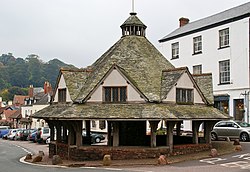

- List of New York Giants first-round draft picks (nominated by Giants2008) The New York Giants are a National Football League (NFL) franchise founded in the 1925 season. The Giants have taken part in the NFL draft since its introduction in 1936, and have selected 70 players in the first round.
- List of songs recorded by Lorde (nominated by Simon and Adabow) Lorde is a 17-year-old New Zealand singer-songwriter who was signed to the Universal Music Group at the age of 13. She has recorded songs for one studio album, one extended play (EP) and guest features, including a cover version of "Everybody Wants to Rule the World" for the 2013 film The Hunger Games: Catching Fire.
- List of National Trust properties in Somerset (nominated by Rod) The National Trust owns or manages a range of 36 properties in the ceremonial county of Somerset, England. The oldest constructed property the Trust manages is an 11th-century dovecot, but natural features and localities are also managed, including Cheddar Gorge, Glastonbury Tor and Burrow Mump.
- List of Mass Effect media (nominated by PresN) Mass Effect is a science fiction media franchise composed of multi-platform video games and associated media. The games follow Commander Shepard on his mission to save the galaxy from a race of mechanical beings known as the Reapers.
- 75th Academy Awards (nominated by Birdienest81) The Academy Awards are an annual awards ceremony that honor achievements in the film industry. The awards were first presented in 1929, and the 75th awards took place in March 2003 at the Kodak Theatre in Hollywood. Steve Martin was the host of the three and a half hour ceremony, which saw Chicago win six awards, including that of Best Picture.
- Premio Lo Nuestro 2013 (nominated by Javier Espinoza) The Lo Nuestro Awards (Spanish for "Our Thing") honor the best Latin music in the United States and are presented by the American television network Univision. The 2013 ceremony took place in February at the American Airlines Arena in Miami, Florida, and awards were presented in 33 categories. The ceremony was hosted by the Mexican performers Ninel Conde and Pedro Fernández.
Featured pictures
Nine featured pictures were promoted this week.


- Delftsevaart (created by Detroit Publishing Company, restored by Adam Cuerden nominated by Editør) Rotterdam, in the Netherlands, was heavily bombed during World War II. Before then, it had a canal system and building structure similar to Amsterdam today. This photochrom from about 1895 shows a fairly typical street in Rotterdam before the destruction.
- Pont du Gard (created and nominated by Benh Lieu Song ) The Pont du Gard in south France is a bridge that forms part of the remains of a 50-kilometre (30 mi) long Roman aqueduct between Uzès and Nîmes. It one of the two best-preserved Roman aqueduct bridges in the world, and a UNESCO World Heritage Site.
- Hip, Hip, Hurrah! (created by Peder Severin Krøyer, nominated by Hafspajen) Hip, Hip, Hurrah! (Danish: Hip, hip, hurra! Kunstnerfest på Skagen) is a painting by Peder Severin Krøyer showing members of the guild of Skagen painters, a group of Scandinavian artists from the late 1800s.
- Braxton Bragg (unknown creator, restored and nominated by Adam Cuerden) When looking at the American Civil War, we're pretty good at documenting the Union side, but, before this photo, we had never had a featured picture of a single Confederate soldier. The photographs of Robert E. Lee being extremely damaged, I decided to start with General Braxton Bragg, one of the main commanders in the Western Theater, and military advisor to Confederate President Jefferson Davis.
- Mount Merapi (created and nominated by Chris Woodrich) Mount Merapi is an active stratovolcano in Indonesia, that has erupted regularly since 1548. Chris Woodrich, a Canadian living in Indonesia, is very, very active in documenting Indonesian culture, geography, and history for Wikipedia, and does an excellent job as well: Check out the list of his featured content.
- Charles I in Three Positions (created by Anthony Van Dyck, nominated by Hafspajen) Anthony Van Dyck's 1635 or 1636 painting Charles I in Three Positions shows King Charles I of England wearing three different outfits and, as implied by the title, three positions: two profiles - one left, and one right - and one front view.
- Charles II of England (created by John Michael Wright or his studio, nominated by Hafspajen) During the English Civil War, Charles II of England's father, Charles I, was executed by the Parliamentarians, and, while the Scottish Parliament attempted to declare Charles II the king, the English parliament overruled them, and the country was taken over by Oliver Cromwell and the Puritans. Charles II regained his throne after the death of Cromwell, leading to the Restoration period, marked by a relaxing of the puritan morality. His reign also saw both the Great Plague of London and the Great Fire of London, and included the Second Dutch War.
- The Cathedral (created by František Kupka, nominated by Chris Woodrich) A painting by Czech artist František Kupka, one of the pioneers of abstract art, The Cathedral (Katedrála) uses simple shapes and colours to give the impression of stained glass in a dark cathedral.
- Fanny Bullock Workman (created by Maull & Fox, restored and nominated by Adam Cuerden) Fanny Bullock Workman was one of Adrianne Wadewitz's last articles; those of us who knew her are working to bring it up to featured article. Part of that is image improvement. Workman was a feminist, mountain climber, travel writer, geographer, explorer, and suffragette who did most of her work before World War I. It's not hard to see why Adrianne - a feminist academic and mountain climber with an interest travel writings and the interaction between cultures - was attracted to her.
-
The Pont du Gard, the highest of all Roman aqueduct bridges, beautifully photographed from a well-chosen angle by Benh Lieu Song.
Reader comments
Echoes of the past haunt new conflict over tech initiative

As with the troubled release of the Wikimedia Foundation's (WMF) flagship VisualEditor project, the release of the new Media Viewer has also been met with opposition from the English Wikipedia community.
A request for comment (RfC) asking whether the new project should be enabled by default for logged-in or anonymous users was closed on 9 July with "clear consensus" that it "should be disabled" for both (the closer added "by default" two days later). A previous RfC on the VisualEditor was closed with similar results. When the proposal's originator asked the WMF if they were going to disable it, WMF staffers quickly shot down the idea. Brion Vibber, the WMF's first employee and currently its lead software architect, wrote that "Perhaps it's time to stop calling self-selected surveys of a tiny subset of our user base 'community consensus'. The vast majority of our user base never logs in, never edits, and never even hears about these RfC pages. Those are the people we're making an encyclopedia for." Dan Garry, the WMF's Associate Product Manager for Platform and Mobile Apps, stated that "This is exactly why there is an opt-out for the feature. We don't expect everyone to like everything we make. That's a reality. So take 10 seconds to go to your preferences and disable it, and you'll never see it again."
Erik Möller, the WMF's deputy director, simply replied "no", and linked to a "detailed explanation" from Fabrice Florin, a product manager: "After carefully reviewing this proposal, we recommend that Media Viewer remain enabled on the English Wikipedia, for a number of reasons ... Overall, we believe that Media Viewer’s benefits far outweigh its downsides. And while the feature still has some limitations, we have collectively identified practical ways to improve it over time." Möller later continued along that line of thought, writing "It's normal and expected that the first reaction to noticeable user experience changes will often be negative. This is why we shouldn't base decision-making solely on early-stage RFCs and first reactions. Just look at the responses to major redesigns by Flickr, [the New York Times], and others—almost universally negative, irrespective of what the data actually says about user and readership growth or decline as a consequence of these changes."
Florin noted that there were several problems with the RfC's implementation, starting with the level of participation (one of their "key concerns"): the most opposes garnered was 64, set against an active editing community of over 124,000. Coupled with the five supports and one neutral, that is a sample of 0.06% of all active editors, and as pointed out in various places by Risker, the opposes could also be set against the 14,681 people who had enabled the beta version of Media Viewer.
Nor did it account for anonymous readers, nearly all of whom do not participate in such discussions. Community members pushed back against the latter point; Isarra Yos wrote that "they know their audience, they interact directly with this audience ..., and indeed they often use the site exactly as this audience would, simply taking things a step further to edit as well." Todd Allen echoed Yos: "I am beyond tired of hearing that those who have volunteered hundreds or thousands of hours per person toward building the greatest educational work in history do not have at heart the interests of those who would use it."
The plot thickened after MZMcBride posted JavaScript code that, if used, would leave the enabling or disabling of MediaViewer to English Wikipedia administrators. Yet when this was applied less than an hour later by Pete Forsyth, he was reverted by Möller, who threatened that the WMF would "temporarily revoke [Forsyth's] admin privileges" if he edited the site's JavaScript again. This edit was made under Möller's Eloquence account; unlike most WMF staff, he uses one account for his personal and professional edits.

That the WMF would have the legal authority to do this is clear, but it is less clear if they were planning to justify it under any English Wikipedia policy. Their exclusive software mandate comes from Wikipedia:Consensus, under the section header "Decisions not subject to consensus of editors". It lays out the differences between various communities, such as MediaWiki software developers, and continues "These independent, co-equal communities operate however they deem necessary or appropriate, such as adding, removing, or changing software features ..., or accepting or rejecting images, even if their actions are not endorsed by editors here."
But for removing an administrator's toolkit, the closest applicable policy is Wikipedia:Office actions, a rarely invoked process that lays out how the WMF can remove "questionable or illegal Wikimedia content" when after a "formal complaint [is] made off-wiki." Only four articles are currently affected by it. The page does not say anything about blocking editors or removing userrights, except in two cases. When the WMF takes an official office action, administrators making "unauthorized modifications" will see their actions reversed and, "possibly", their administrator tools removed. There is also an explicit caveat for when an editor is repeatedly adding content subject to (a) DMCA takedown notice(s).
Where do the WMF and community go from here? There is an ongoing request for arbitration that as of publishing time has a majority in support of accepting the case, but the arbitration committee's own jurisdiction prohibits them from reviewing "official actions of the Wikimedia Foundation or its staff". A section has been opened on the RfC's discussion page proposing that the community reassess the tool in six months. "In the meantime," states Tom Morris, "the Foundation can go back [and] seriously rethink how they engage with the community—threatening desysops is not the way to do it. If the issue is the Foundation believes that the average reader would be more keen on MediaViewer than involved editors, then the Foundation can do user testing and surveys to show that."
In brief
- FDC members announced: The WMF's Board of Trustees has announced the selection of four new members for the Funds Dissemination Commitee, which in its primary role recommends funding amounts for the Wikimedia movement's largest affiliates. English Wikipedians will likely be familiar with Anne Clin, who edits as Risker; the other three are Matanya Moses (matanya), Dumisani Ndubane (Thuvack), and Osmar Valdebenito (B1mbo). The selections come a week after they published a shortlist of twelve candidates.
- Let's get serious about Wikipedia: Wikimedia UK's Martin Poulter has published a blog post on JISC's website on his outreach efforts with British educational institutions.
- Annual plan published: The WMF has released its financial agenda for the pending fiscal year, along with an extensive FAQ. It calls for expenditures of $58.5 million, up from $49.2 million in the last fiscal year.
Reader comments
World Cup, Tim Howard rule the week
Unsurprisingly, the World Cup continued to dominate the English Wikipedia's viewing statistics. In particular, the record-breaking performance of US goalkeeper Tim Howard and the tournament-ending injury to Brazil's Neymar drove a large number of views to their articles.
For the full top 25 list, see WP:TOP25. See this section for an explanation for any exclusions.
For the week of 29 June to 6 July, the ten most popular articles on Wikipedia, as determined from the report of the 5,000 most viewed pages, were:
Rank Article Class Views Image Notes 1 2014 FIFA World Cup 
1,604,100 28 down, four to go. Brazil suffered a catastrophe against Colombia when a bad tackle by Juan Camilo Zúñiga left Neymar, Brazil's ever-reliable goal-dispenser, out for the count with a fractured vertebra. They still managed to win though. Plucky Costa Rica, ranked 34th in the world before the tournament, managed to hold the Netherlands to a goalless draw for the match's duration, only to finally succumb 4/3 on penalties. The four remaining teams (Germany/Netherlands, Brazil/Argentina) represent two of the most ancient and bitter rivalries in world football, but are denied the chance to enact their respective feuds, if at all, until the final. 2 Transformers: Age of Extinction 
808,304 
Usually, when a big-shot director is tired of a franchise, the studio will offer him a juicy pay packet to stay on; Paramount gave Michael Bay an entire movie so he would agree to continue to prop up their tent-pole series, which is all the more vital since Marvel and Indiana Jones are now at Disney. The movie's 17% RT rating (even lower than for the much-reviled entry, Revenge of the Fallen) shows just how much commitment Bay brought to the project; that said, its $300 million worldwide opening (of which $100 million was from the US and $90 million, thanks to some shameless in-movie pandering, was from China) shows audiences don't really care. 3 FIFA World Cup 
758,356 The broader article on the history of the competition may have been accessed by people looking for the long view, but in truth it was probably more to do with people looking with the more specific article above. 4 Tim Howard 
678,538 
Whenever the American attitude to sports is mentioned in conversation, sooner or later someone is bound to quote an aphorism popularised (though not coined) by Green Bay Packers coach Vince Lombardi: "Winning isn't everything; it's the only thing." There have been many theories proposed as to why football (soccer) hasn't exactly caught fire in the US, but the simplest is that not only do Americans not generally win at it, it's not really a game that encourages the Big Win. The Big Win is a defining theme in US culture, and the idea that a game could end in a nil–nil draw rakes claws across the American psyche. Americans don't feel comfortable unless the home team is ahead by double digits. Well, America lost its match against Belgium this week, sending it out of the World Cup, but their goalkeeper Tim Howard will go down in history after making a superhuman 16 saves; a record for a World Cup match. This led to an explosion of Internet memes suggesting other things Howard could save (My favourite? Howard saving Emily Ratajkowski from Robin Thicke). So perhaps Americans have finally learned that winning isn't the only thing. Or perhaps not. But still it was fun while it lasted. 5 Independence Day (United States) 
663,819 
The American celebration of its Declaration of Independence from Britain on July 4, 1776 (although technically American independence was declared on July 2, by which time the American Revolutionary War had already been going for more than a year, and not actually attained until February 3, 1783) is arguably the biggest summer festival in the English-speaking world, with the possible exception of Christmas in Australia. Still, only half the interest of last year, which seems to be a running theme. 6 James Rodríguez 
642,528 
The Colombian midfielder scored at least one goal in each of his team's matches, even their final, home-sending loss against Brazil. That his team is out is no tragedy for Rodriguez; not only is he a favourite for the Golden Boot but Real Madrid are now desperate to sign him. 7 Nick Kyrgios 
449,362 
The 18-year-old Australian tennis player, ranked just 144th in the world, smashed into the public eye by reaching the quarter-finals of the 2014 Wimbledon Championships. 8 Neymar 
411,297 
How must it feel to be him right now? To go from the tournament's supernaturally competent goal-scoring machine to hospitalised with a fractured vertebra thanks to an unpunished bad tackle? He must be wondering what the chances are of him never competing again, to say nothing of seething with rage. 9 Costa Rica 
372,966 
This stalwart little country, with a population slightly smaller than Sydney, Australia, managed to demonstrate that you don't need an army to wage an effective campaign for world domination. Although they "only" made it to the quarter finals of the World Cup, they still had to be worn down by a 4 to 3 penalty shoot-out. 10 Deaths in 2014 
357,467 
The list of deaths in the current year is always a popular article.
Reader comments




